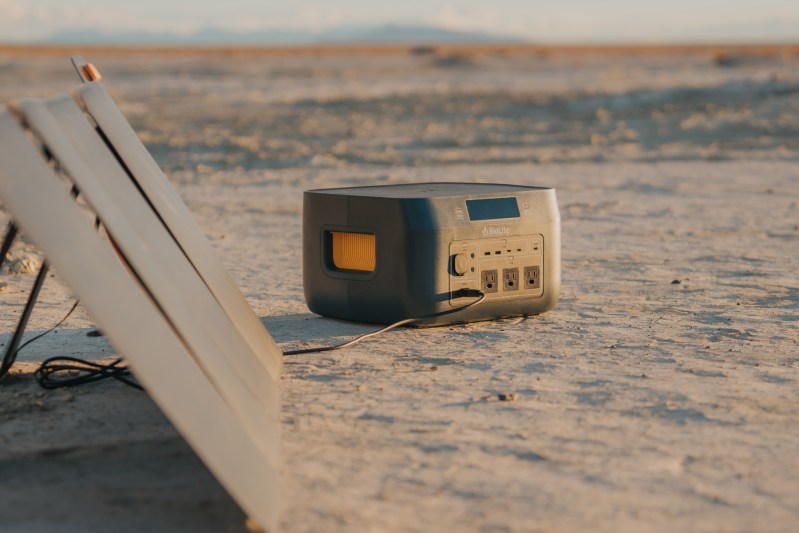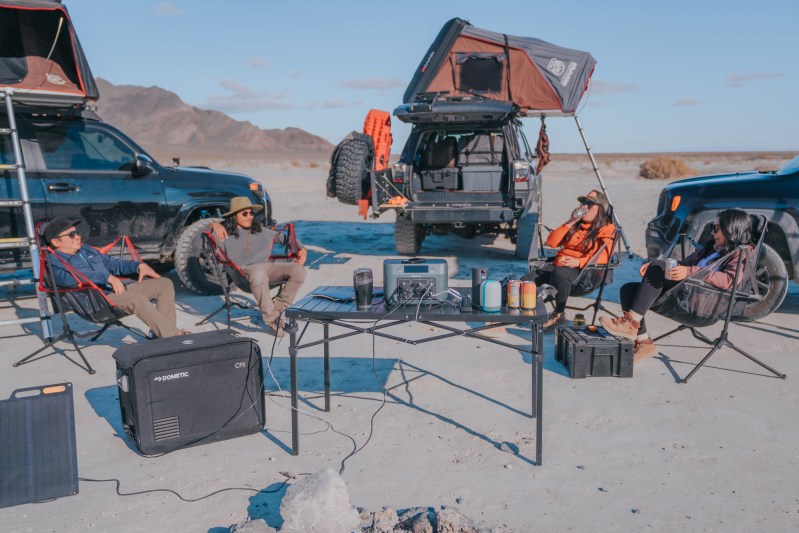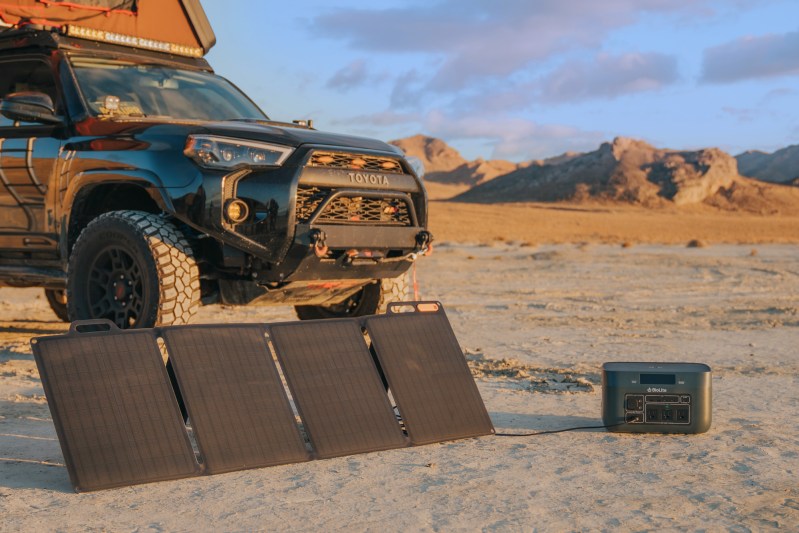As fall comes around and temperatures begin to drop it can be tempting to pack away the camping gear until spring. But fall can also be one of the most magical camping seasons, with whole forests turning to burnt orange in front of your eyes, majestic sunsets, and starscapes that you don’t have to stay up until the early hours of the morning to see. As well as ensuring your sleeping system is set up for cold weather camping, you need to gear up to stay comfortable in cooler weather, longer nights, and more time in camp.
Whether you want the flickering ambiance of fairy lights, a powered cooler to keep your beers cold, or to spend your evenings catching up on the best Netflix shows, you need a reliable unit to keep you powered up. The new BioLite BaseCharge is a robust rechargeable unit that is camping, road trip, and off-grid ready.

The Technical Low-Down
The BioLite BaseCharge is available in two models. The BaseCharge 600 has a 622 watt-hour internal battery and a maximum output of 600 watts with a 1200 watt surge. The larger BaseCharge 1500 has a 1521 watt-hour battery and an output of 1200 watts, with a 2400 watt surge. Each unit has a 12-checkpoint safety system, so you can charge up with confidence and security.
These fully rechargeable units offer you home-like power in the most remote regions, with AC, DC, DC Barrel, USB A, and USB C power outputs. Whether you’re using the unit to power your lighting or run a remote office in the backcountry, you can check your power status with the resettable energy odometer. The message center screen gives you real-time updates on the system, with performance and error messages — like overexerting the surge capacity — easy to understand. They even have wireless charging for your smartphone.

What Does That Mean for You?
Whether all that technical information makes sense to you or it’s just a list of numbers that don’t have any meaning, you need to know what these units are really capable of. Well, quite a lot it seems. You can use these units for almost anything, from coffee grinders to blenders, to laptops, lights, coolers, cameras, and of course phones. Both units have a high output level, but let’s break down how many times you can use each unit to charge different items.
BaseCharge 600
- Smartphone – 48 charges
- Electric cooler – 15 hours
- Laptop – 9 charges
- Action camera – 106 charges
BaseCharge 1500
- Smartphone – 117 charges
- Electric cooler – 37 hours
- Blender – 164 smoothies
- Laptop – 22 charges
- Quadcopter drone – 20 charges

Where Can You Take the BaseCharge?
Almost anywhere. These units not only pack a punch, but they’re fully portable and ready to turn your fall camping setup into a fully powered glamping experience. With the units weighing 13 pounds — BaseCharge 600 — and 26.5 pounds — BaseCharge 1500 — you aren’t likely to load them up for a long trek. They’re perhaps best suited to car
When it comes to fall camping tips, you can’t go wrong with ‘plan for changeable weather.’ Camping in the rain often leaves you running for shelter, hiding in your tent, and passing the night with films, audiobooks, or listening to some music while you enjoy a beer or cocoa. The BioLite BaseCharge units are not waterproof, and it’s worthwhile purchasing a heavy-duty waterproof dry bag to stow it away securely when it’s not in use.
As the weather cools, you can rest assured that your unit will see you through fall. The ideal temperature range for using the BaseCharge is between 30 – 100 F, ideal for fall camping. As winter creeps in and temperatures drop to freezing, you may find a reduced power output from the BaseCharge, but this is standard for electricals in the cold, as anyone who has taken a smartphone skiing will know all too well.
The limit to our ‘almost anywhere’ suggestion is that you cannot fly with the BioLite BaseCharge. The lithium-ion batteries in both the BaseCharge 600 and 1500 exceed the FAA’s regulated limit of 100 watt-hours.

How Do You Charge the BioLite BaseCharge?
The BaseCharge 600 can be charged to 80% capacity in just 3.5 hours by using the AC adaptor alongside the USB-C input. Using the same system, the BaseCharge 1500 will reach 80% capacity in 8 hours.
If you’re camping for longer than a few nights, or you’re relying on a higher level of power, there’s a good chance you’ll need to charge on the go. The BaseCharge can be charged up on the go from a vehicle, or by setting up the BioLite SolarPanel 100. These solar panels can be left out during the day while you’re out hiking, or just relaxing in camp, and will trickle charge the unit. If you want to charge your unit faster, you can link together up to four of these units for up to 400-watt output. You can also use these solar panels to directly charge your appliances.



